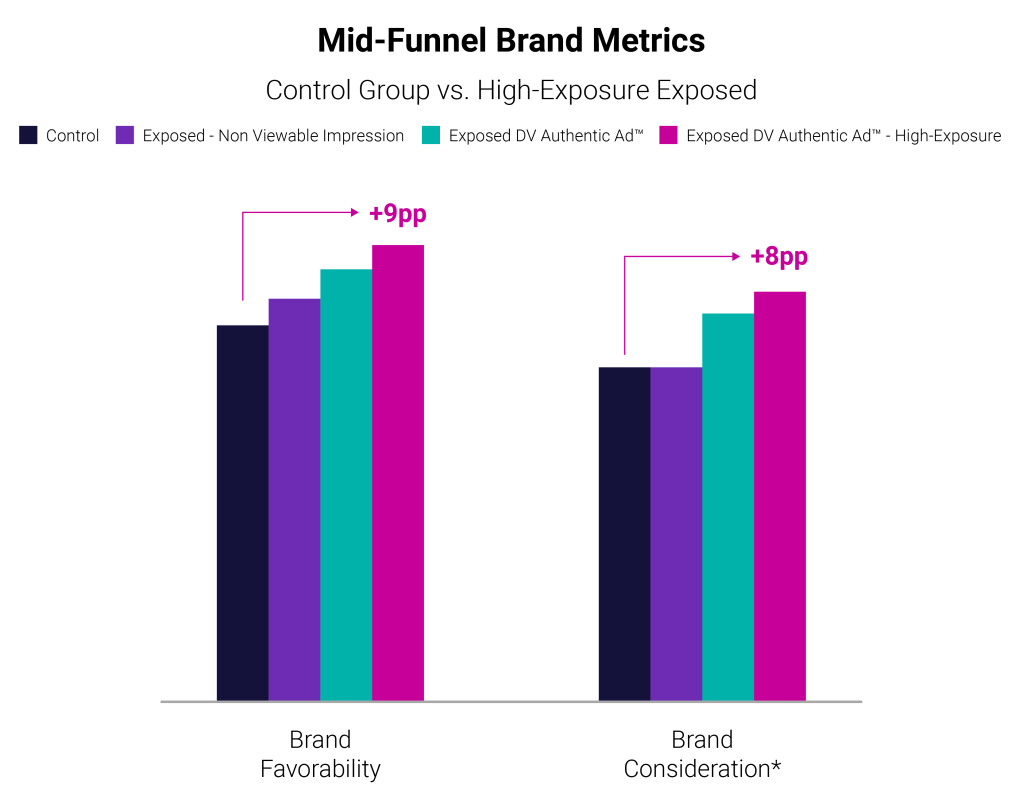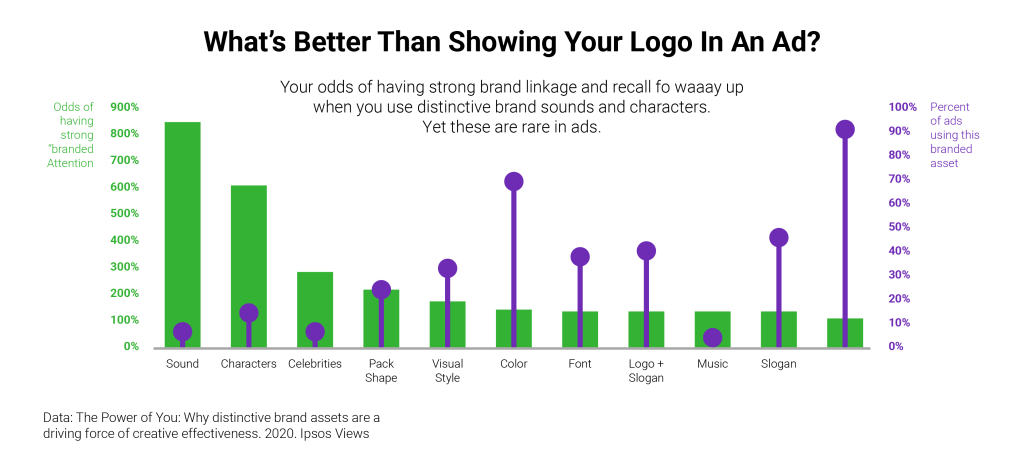Last month, DoubleVerify (DV) hosted a virtual webinar alongside the creative consultancy Genius Steals and the IAB that explored the notion of attention in advertising and how brands can harness the power of attention.
Genius Steals founders – Faris Yakob, author of the book Paid Attention, and his partner and co-founder, Rosie Yakob – kicked off the session with a lively demonstration diving into the concept of attention and how it is measured. This was followed by an engaging panel discussion featuring the Yakobs, Zoe Soon, VP of the experience center at the IAB, DV CMO Dan Slivjanovski and DV’s Managing Director of the Americas, Gian LaVecchia.
In this blog, we’ll dive further into questions that were asked during our session, covering topics including what attention means to marketers, the attention metrics that matter and the future of attention measurement.
What does attention mean to brands and advertisers? Why is it especially important for brands to embrace attention measurement in today’s complex media industry?
For years, we have tried to measure the impact of our advertising through proxy metrics such as viewability, which, while important, are not enough to capture the whole story. As the media industry continues to grow, consumers are faced with more content than ever, and see up to 10,000 ads a day according to Forbes. The Genius Steals team states that the best way for advertisers to “optimize communication investment in today’s media cacophony, starts with measuring attention.”

The media industry has evolved to a place where we are now able to measure the concept of attention itself and attention metrics have quickly become the new frontier of digital measurement.
This industry shift has been augmented by increasing privacy concerns and regulations, such as GDPR laws and looming third-party cookie deprecation. Advertisers need to be able to understand what is driving audience engagement and business impact in a privacy-friendly way, and attention metrics offer a solution.
Attention is a complex concept and is measured through a variety of metrics. Are there some metrics that matter more than others?
The Genius Steals team illustrates through a variety of experiments that attention is a multifaceted concept that is made up of several signals. This is why DV’s performance solution, DV Authentic Attention™, aggregates 50 different data points into a holistic measure – the Attention index – to quantify ad exposure and user engagement.
For exposure, DV Authentic Attention™ evaluates an ad’s entire presentation, quantifying its intensity and prominence through metrics that include viewable time, share of screen, video presentation, audibility and more. For engagement, DV Authentic Attention™ analyzes key user-initiated events that occur at the device or ad level, including user touches, screen orientation, video playback and audio control interactions.
“Advertisers have the opportunity to calibrate DV Authentic Attention™ metrics based on their primary objectives,” according to DV’s Gian LaVecchia. DV has found that different elements of attention correlate with different advertising KPIs.The exposure index correlates with branding KPIs, such as brand awareness and favorability, and the engagement index correlates to direct response KPIs such as conversions.
How can attention metrics help prove campaign ROI?
DV has validated attention metrics against different client KPIs to help illustrate the value of attention measurement across the marketing funnel.
In one example, Mondelez leveraged DV Authentic Attention™ to measure what factors were driving brand lift KPIs. DV helped identify performance drivers by analyzing attention insights across their ads, and validated results against a Kantar Millward Brown brand lift study. They found that High-Exposure impressions drove 9pp lift in brand favorability as well as 8pp lift in brand consideration. This insight enables Mondelez to better identify awareness-driving ads mid-flight.

DV also helped Vodafone Germany, a leading telecommunications company, measure and optimize the performance of its digital ad campaigns to drive site traffic and sales. The telco brand tested DV Authentic Attention™ across two campaigns. One was focused on driving “Qualified Traffic” (i.e. site visitors demonstrating purchase intent) and the other was purely driving sales – to evaluate their performance in-flight, using a metric that correlated with actual business outcomes.
When looking at the impact of quality on campaign performance, Vodafone’s DV Authentic Ads™ had much higher conversion rates (43% higher for qualified traffic and 77% higher for sales) than those of non-DV Authentic Ads™. Moreover, high engagement DV Authentic Ads™ specifically drove 2.5x higher qualified traffic & sales conversion rates.

What are some of the main ways advertisers can use attention metrics to refine their campaign strategies?
Attention metrics are taking the industry by storm as they can be leveraged across the campaign workflow. DV has seen clients successfully leverage DV Authentic Attention™ insights to:
- Measure campaign effectiveness – including identifying top-performing sites, media partners, targeting tactics and more, and further contextualizing performance through global attention industry benchmarks.
- Refine future planning – including leveraging creative insights to improve future display and video campaigns – to improve overall performance.
There is ample opportunity to glean creative learnings from attention measurement. According to DV’s Gian LaVecchia, “Attention is reintroducing creative energy into the industry – and can help unlock access to creative insight that we haven’t been able to access before.”
This sentiment was echoed by the Genius Steals team, who emphasized that capturing attention is not one size fits all – different campaigns and media environments command different creative strategies. Attention metrics offer a way for advertisers to hone in on the right strategy for a given campaign.

It took some time for viewability to be a metric that brands would transact on. Do you think attention should be a metric that advertisers consider transacting on, and what needs to take place for that to happen?
Viewability is now considered table stakes. Advertisers have come to expect that their ads will at least meet a viewability threshold of 70% – the IAB standard for baseline media quality. DV clients have surpassed this threshold, with an average viewable rate of 73% across campaigns in 2021. However, only 66% of video ads play through completion, and only 16% are audible and viewable on completion. There is still room to improve and drive greater impact, sparking the age of attention measurement.
“Ultimately, attention will become a requirement. Advertisers don’t want to pay for possibilities; they want to pay for access to real humans,” according to the Genius Steals team. With a changing media landscape, a common currency that extends across all screens and platforms is essential.
However, attention is a new category in today’s media industry, and for a new category to be widely adopted, it must be “understood, valued and standardized,” according to the IAB’s Zoe Soon. Zoe added that transparency and industry collaboration are key to initiating this process.
Be sure to check out our full webinar below to learn more about the power of attention!

